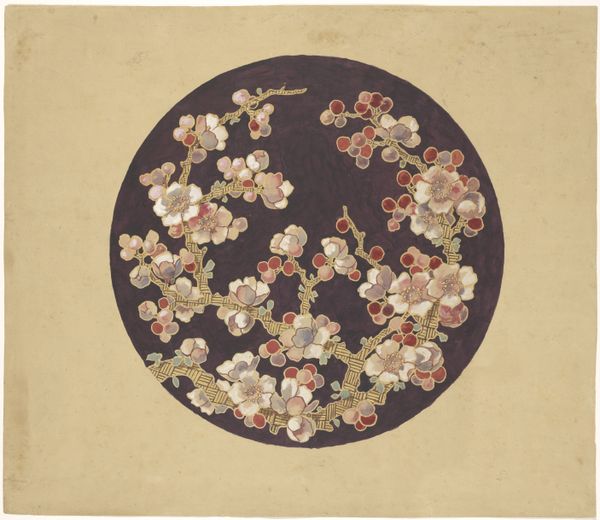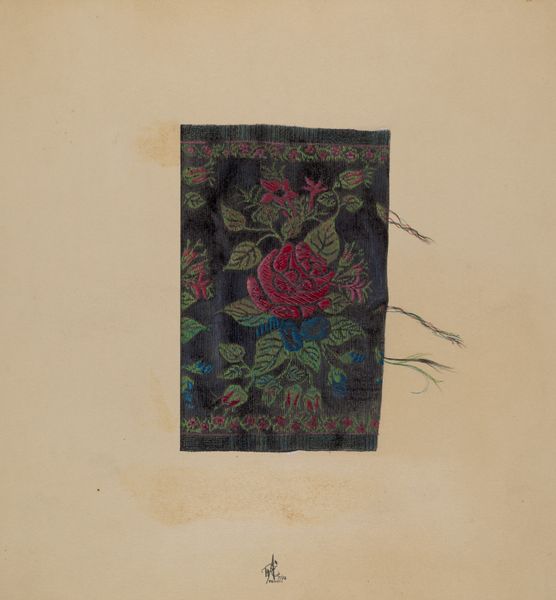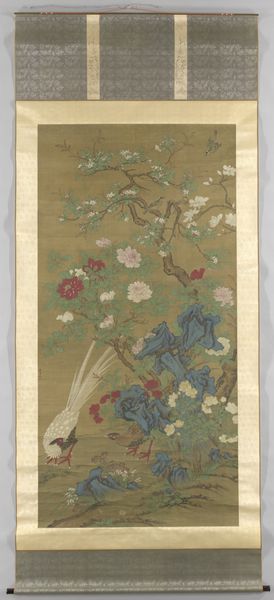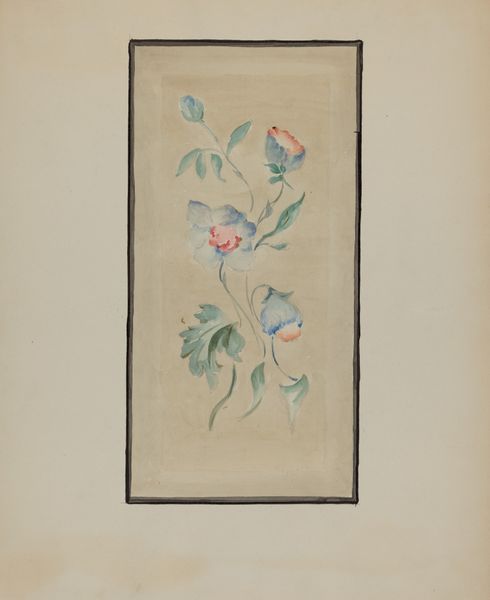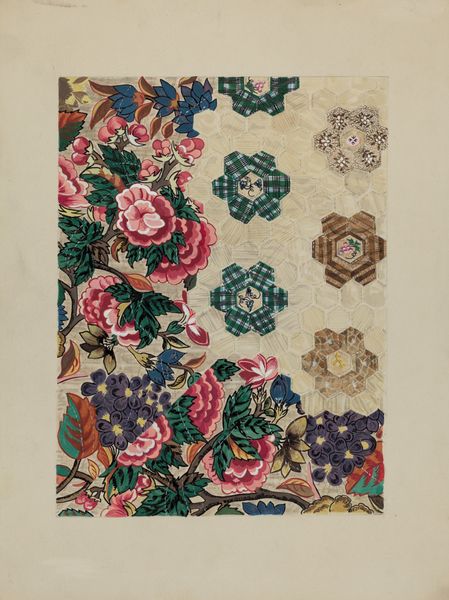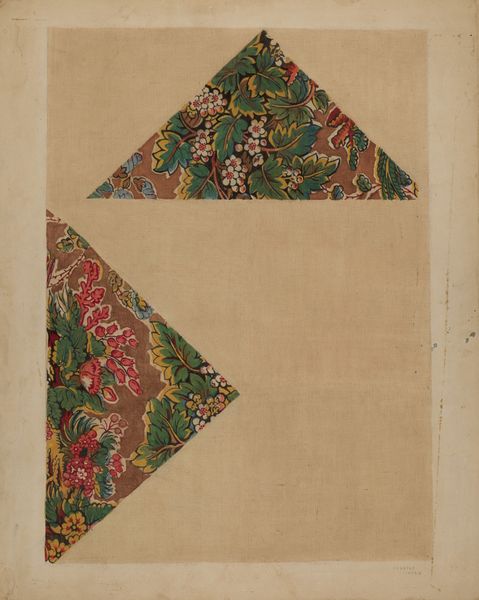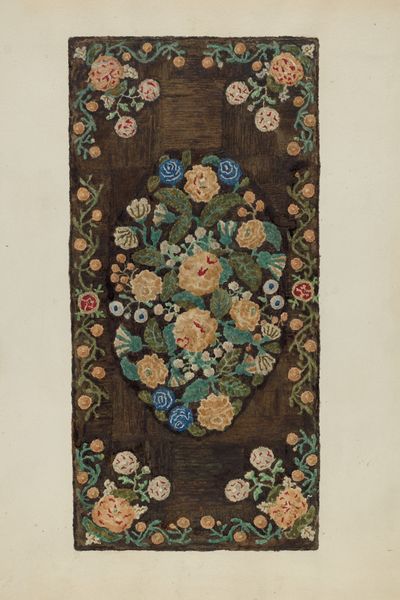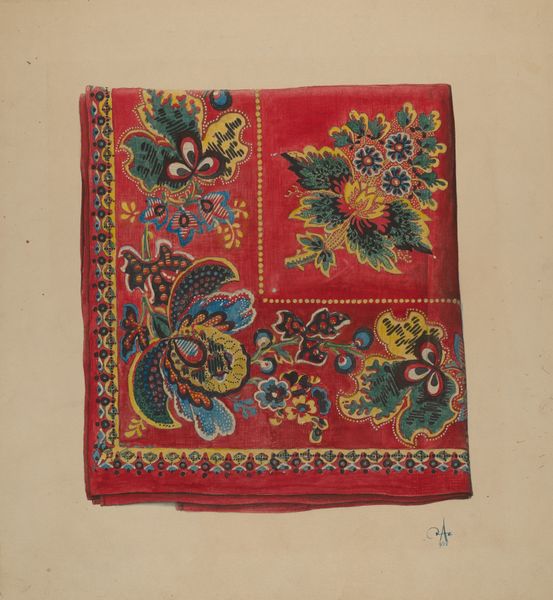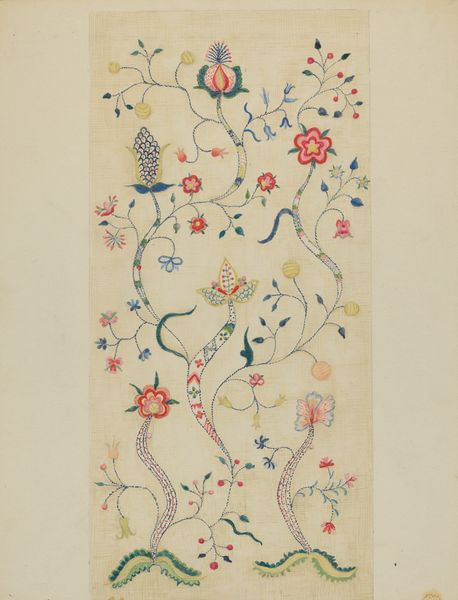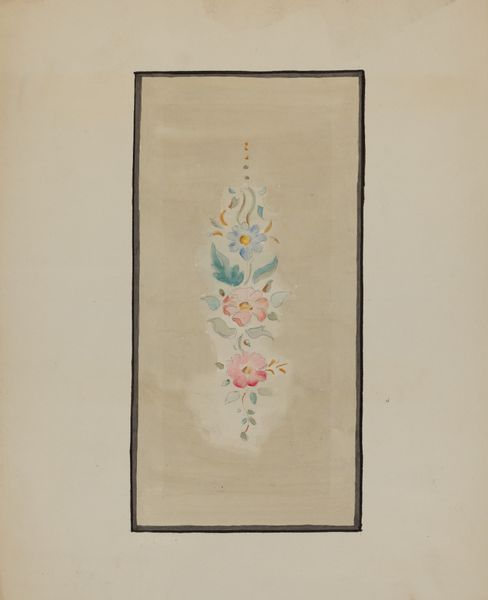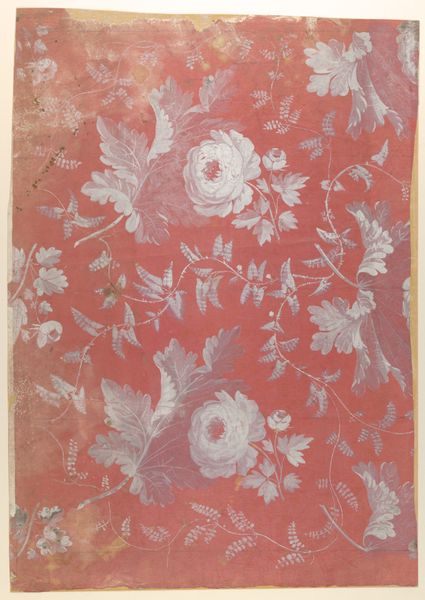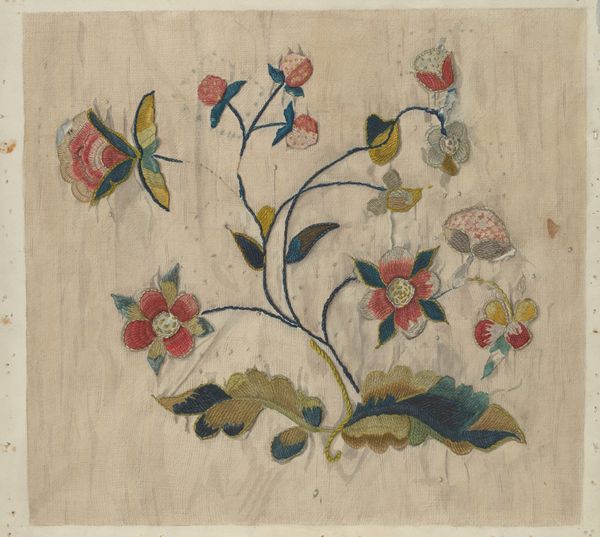
drawing, mixed-media, fibre-art, plein-air, textile
#
drawing
#
mixed-media
#
fibre-art
#
water colours
#
plein-air
#
textile
#
geometric
#
decorative-art
#
watercolor
Dimensions: overall: 41.7 x 29.1 cm (16 7/16 x 11 7/16 in.)
Copyright: National Gallery of Art: CC0 1.0
Editor: So this is Phyllis Dorr's "Crewel Embroidered Panel," created around 1937. It's a striking piece, bringing together fibre art, drawing and mixed media. I’m immediately drawn to the contrast between the dark background and the bright, almost whimsical floral and bird motifs. What’s your take on this work? Curator: Well, it’s tempting to simply appreciate the aesthetic qualities, isn’t it? The colour palette is inviting. But as an activist, I see textile art like this embedded within a broader conversation about gender, labour, and domesticity. In 1937, what did it mean for a woman to dedicate herself to embroidery? What societal expectations were at play? And how might she have been subverting or reinforcing those expectations through her creative expression? Consider the labour-intensive nature of crewel embroidery; are we looking at an act of leisure or an expression of resilience, resistance maybe? Editor: That's a fascinating way to consider it. I hadn’t thought about the labor aspect so much. Curator: Also, the presence of the bird in this textile piece becomes quite potent when considering female agency. Where do we see it positioned within this garden that she has carefully composed and cultivated? How does its vibrant color contrast against the darker background inform us about her status within that composition? This wasn’t mere hobby craft, right? Editor: Now that you point that out, that singular bird is pretty evocative. Curator: Right? It challenges assumptions about so-called “feminine” crafts, doesn't it? We need to question why certain art forms are historically devalued because of their association with marginalized identities. Editor: Definitely something to consider when thinking about art made by women of this period. I learned so much! Curator: Agreed! It’s crucial that we expand our understanding and embrace these multidimensional layers of textile arts. It allows us to reclaim lost stories and recognize how these forms of creativity shaped cultural identity and power.
Comments
No comments
Be the first to comment and join the conversation on the ultimate creative platform.
